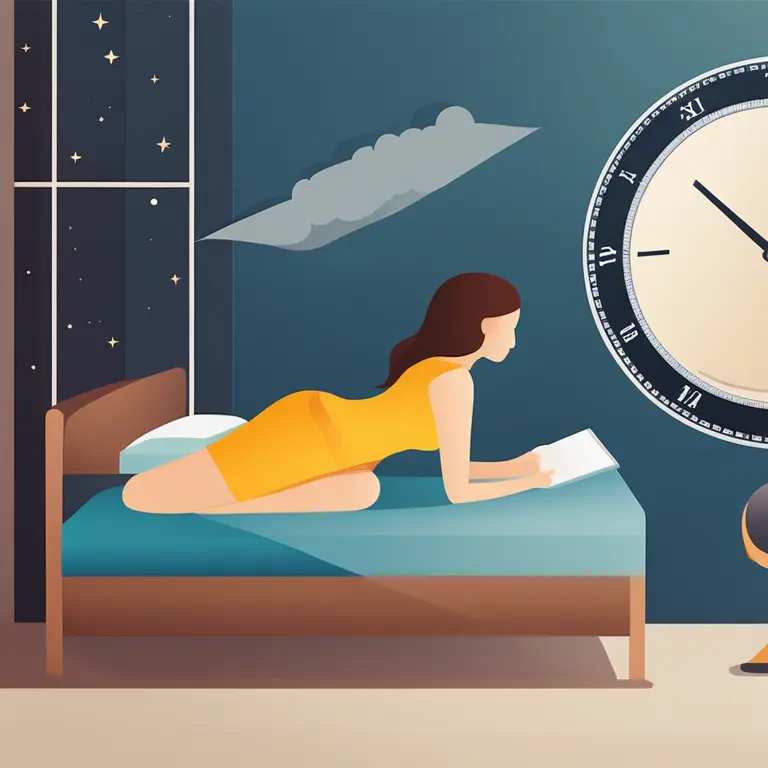
Soothing Sleep Meditation Techniques
Discover simple and effective meditation practices to help you drift into a peaceful sleep, restoring your body and mind.
article by Hina Kurosawa
Introduction to Sleep Meditation
For countless individuals, the quest for a restful night's sleep remains elusive. Tossing and turning with thoughts racing through the mind is a modern-day plight, one that meditation seeks to alleviate. This ancient practice, adapted for the needs of our frenetic world, offers a refuge for the restless. As we step into 2024, the intersection of technology and tradition provides us with innovative ways to integrate meditation into our nightly routine, promising a serene migration into the realm of dreams.

The Basics of Sleep Meditation
Sleep meditation is not a one-size-fits-all solution but instead offers a tapestry of techniques tailored to individual preferences and needs. The core objective remains consistent: to create a state of relaxation in which the mind can quieten and allow sleep to envelope you naturally. Whether through guided imagery, deep-breathing exercises, or body-scan techniques, these meditative practices activate the parasympathetic nervous system, which is responsible for the body's rest and digest responses -- a stark contrast to the constant flight or fight stimuli of our daily lives.

Cultivating the Perfect Environment
Your environment plays a crucial role in the efficacy of sleep meditation. In this digital age, bedroom sanctuaries are often infiltrated by the blue light from screens, disrupting circadian rhythms. As we adapt our sleeping spaces, consider dimming lights, removing electronic distractions, and creating a personal oasis that fosters calmness. Introducing elements like aromatherapy, with calming scents such as lavender or chamomile, can enhance the sensory experience and set the stage for deep relaxation.

Guided Meditation: A Path to Sleep
Guided meditation, widely available through apps and online platforms, acts as a vessel for many to sail into sleep. The calming voice of a guide can assist in dismantling the barrage of thoughts and worries that often preclude sleep. In 2024, the personalization of these meditations through AI algorithms offers an even more tailored experience, recognizing the user's patterns and preferences to aid in faster and deeper sleep induction.
Breathing Practices for Slumber
Proper breathing techniques are pillars of meditation that have stood the test of time. The "4-7-8" method, breathing in for 4 seconds, holding for 7, and exhaling for 8, continues to be a proven technique for sedation. This controlled breathing not only helps to reduce stress but also primes the body for sleep by mimicking the natural rhythm of sleep onset, with longer exhales representing the slowed respiratory rate of slumber.
Body Scan for Physical Relaxation
The body scan technique is a journey of awareness through the physical self, from the tips of the toes to the crown of the head. As one progresses through the body, each area is consciously relaxed. This method not only assists in releasing physical tension—a common impedent to sleep—but also in quieting the mind, as it focuses on the present sensations rather than the thoughts of the past day or the worries of tomorrow.
Progressive Muscle Relaxation
Progressive Muscle Relaxation (PMR) is another effective tool. By tensing and then releasing different muscle groups, the contrast between tension and relaxation becomes a signal to the body that it is time to rest. The regular practice of PMR before bed has been shown to decrease the time it takes to fall asleep and is particularly beneficial for those with a hyperarousal response to stress.
Embracing the Future of Sleep Meditation
As we embrace the future, the field of sleep meditation will continue to expand with innovations such as neurofeedback and virtual reality experiences designed to induce sleep. These technologies promise to amplify the benefits of meditation, providing not just a gateway to better sleep but also a deeper understanding of our sleep patterns and quality. However, the essence of sleep meditation remains rooted in simplicity: it is an individual's sanctuary in the quest for serenity and restorative slumber.
Published: 1/14/2024
Modified: 1/15/2024
More predictions
Come back here soon to learn more about yourself and your future


Mindfulness & Meditation: A Guide for High Schoolers
Discover the benefits of mindfulness meditation tailored for the hectic life of high school students, and learn simple strategies to incorporate it into the daily routine.


Easing Loneliness with Mindfulness Meditation
Explore how mindfulness meditation can provide solace and connection to alleviate the feelings of loneliness.


Mindfulness Meditation Basics for First Graders
Introducing foundational mindfulness meditation practices to instill calm and focus in first-grade students.